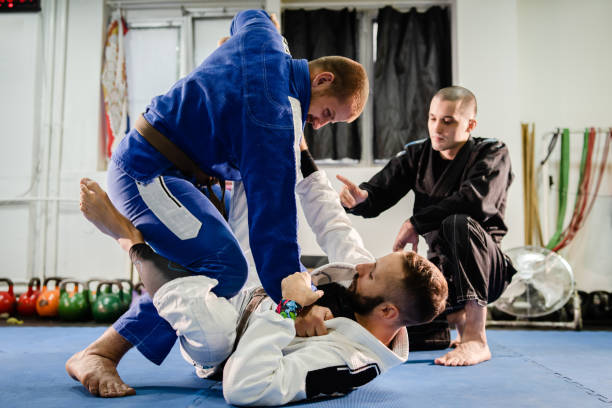What Are the Benefits of Learning Jiu Jitsu?
For decades and centuries, people have preached about the benefits that martial arts bring. Depending on the circumstances, martial arts has been something that people practice to improve their capabilities in their day-to-day jobs, such as manual labour.
Other people practice martial arts to keep in shape and to enjoy the sense of community that comes from practicing in a gym. No matter what your reasons are, chances are that you will come across a martial art known as Jiu Jitsu. The mental and physical benefits that come from learning this are some that will stick with you for the rest of your life.
The Physical and Mental Benefits
Many of the physical benefits that come from learning Jiu Jitsu in Reading are similar to that of learning any other martial art. You will find that it helps you stay in shape as you practice moves, keeping your body active and moving.
Naturally, you will also have a sense of good self-defence and what it takes to protect yourself in a dangerous situation. You will also find that it helps you in terms of coordination, flexibility, range of motion, and even helping you condition your body through the precise movements you will make.
This is where Jiu Jitsu differs from other forms of martial arts. The movements of this partial art are deliberate, but not weak. You have to learn how to manage your strength in a way that doesn’t leave you exhausted mid-session, while also learning how to push yourself to your limits in other areas.
This kind of mindset has been shown to help people improve their mental health as well. As a part of practicing Jiu Jitsu, people often have to practice mindfulness, which is important in addressing mental health. You will also find that the exercise boosts your mood and the camaraderie you develop with your peers will fuel this.
The History of Jiu Jitsu
Before you look into the idea of taking up Jiu Jitsu, it would make sense that you want to learn more about where it came from and how it came to be as popular as it is. Some people argue that the true roots of Jiu Jitsu trace back to Buddhist monks of India, but just about everyone agrees that the modern form is firmly derived from Japan.
During the 1800s, it was considered a battlefield art practiced by the samurai of feudal Japan. It was developed to allow for the samurai to be able to fight when they found themselves disarmed and on foot, despite being restricted by the armour they wore.
Over the course of centuries, Jiu Jitsu has evolved to include moves from other martial art practices including throws, strangles, strikes, and joint-locks. While there is no need for samurai to learn this practice, many people find themselves wanting to learn for a variety of reasons, whether that is to become more fit, to learn self-defence, and to find confidence in yourself.


Comments are closed.